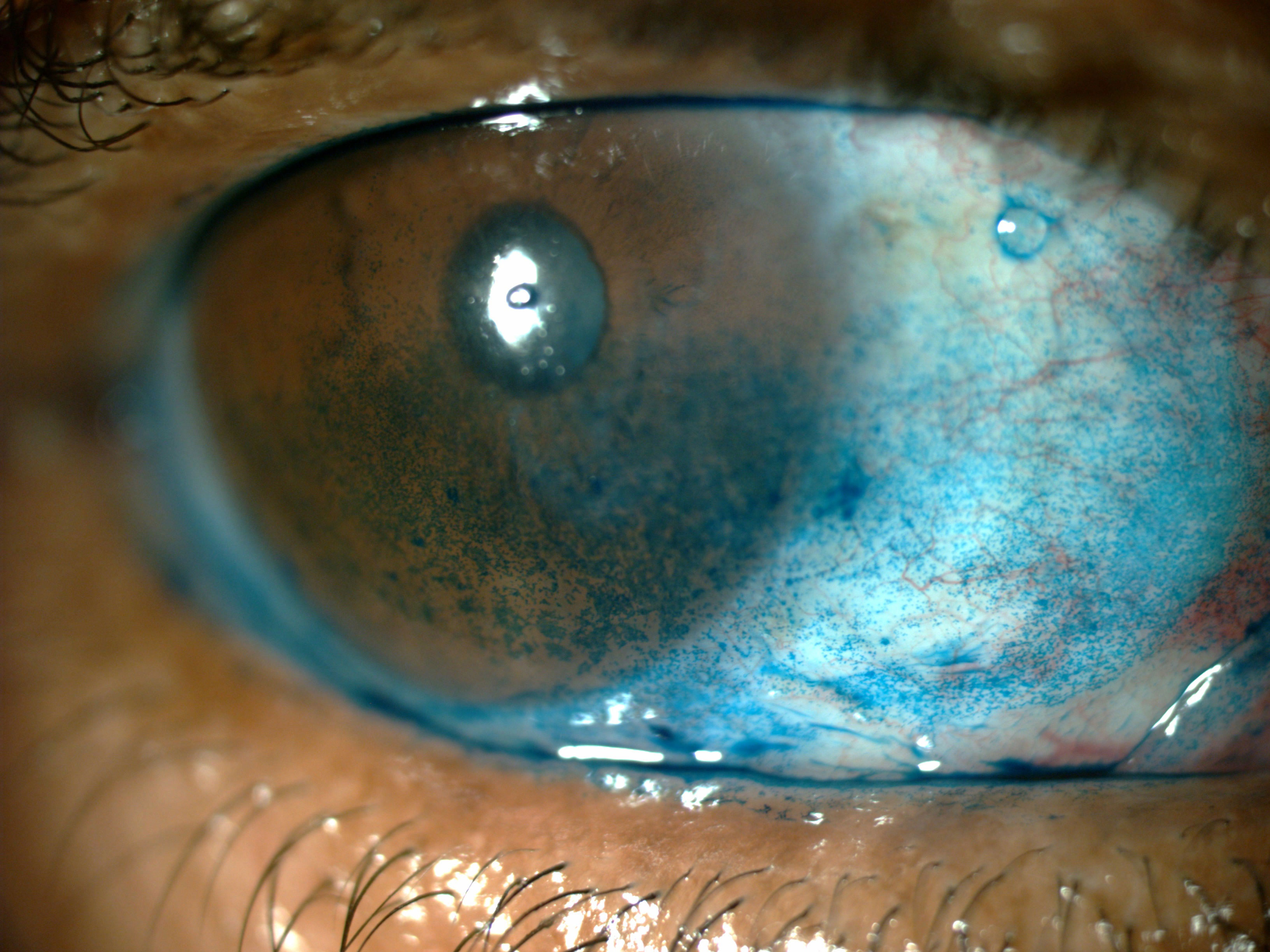 |
Q:
I have a few patients with significant anterior segment staining (corneal and conjunctival) who seem to be good candidates for autologous serum. Can you talk about how to acquire these drops and what concentration works best?
A:
“Dry eye disease is one of the most common concerns that brings patients to eye care professional offices,” says Eric Donnenfeld, MD, a Long Island ophthalmologist who specializes in refractive, corneal and cataract surgery. He notes that the severity of the disease varies from mild to severe and influences treatment, the response to which depends on the patient. In general, artificial tears and lid hygiene are effective in cases of mild dry eye. When this approach is not sufficient, Dr. Donnenfeld suggests moving to immunosuppressive agents, such as cyclosporine, lifitegrast and corticosteroids. For moderate to severe dry eye patients, autologous serum tears may be their best option.
 |
| Severe dry eye patients with advanced corneal staining are ideal candidates for autologous serum tears. Photo: Eric Donnenfeld, MD. Click image to enlarge. |
An Ideal Replacement
Physiological tears are complex in nature and contain more than 100 different proteins that help support the ocular surface. Many of these same proteins, including growth factors, fibronectin and laminin, are also found in our blood. This makes autologous serum tears created from the patient’s own blood an ideal replacement, according to Dr. Donnenfeld.
Serum tears stand out even more when compared with artificial tears, which often only contain a few components, such as sodium, potassium and chloride. Further widening the gap, Dr. Donnenfeld adds that serum tears help promote epithelial growth and stability as well as corneal nerve regeneration and are comfortable for the patient, as tears and blood have almost identical salinity and pH.
The Production Process
Dr. Donnenfeld’s clinic has a registered nurse who draws several vials of blood from the patient and sets it aside to clot for an hour. The blood is then spun down with a centrifuge to separate the red blood cells from the clear serum. The red blood cells are discarded, and the clear serum is filtered through a 25mm polyethersulfone disc filter. The remaining serum is then mixed with sterile, non-preserved saline to produce serum tears in varying strengths, ranging from 20% to 50%.
For practices that don’t do their own blood draws, local hospitals, blood labs and compounding pharmacies can work with clinicians to create autologous serum tears that they can use as an alternative option. Pharmacies typically charge $15 per 5mL bottle of drops, and the fee for the blood draw is usually around $10. Draws should produce anywhere from six to eight bottles, which can last four to six months, so the patient should expect to pay about $115 out-of-pocket for the entire process, as this often isn’t covered by insurance.
Serum tears are typically used between four and eight times per day, much like artificial lubricating drops. They are non-preserved, so patients don’t have to worry about preservative toxicity, but they must be refrigerated when not in use. Dr. Donnenfeld says those with more significant dry eye will often carry serum tears in a cold container for use during the day. He notes that bottles of serum tears may be frozen for a short period of time and recommends defrosting them in the refrigerator or by twirling the frozen bottle vigorously between the palms of the hands.
Dr. Donnenfeld has found serum tears to be one of the most effective treatments for dry eye disease and an excellent addition to the management of moderate to severe dry eye patients.

